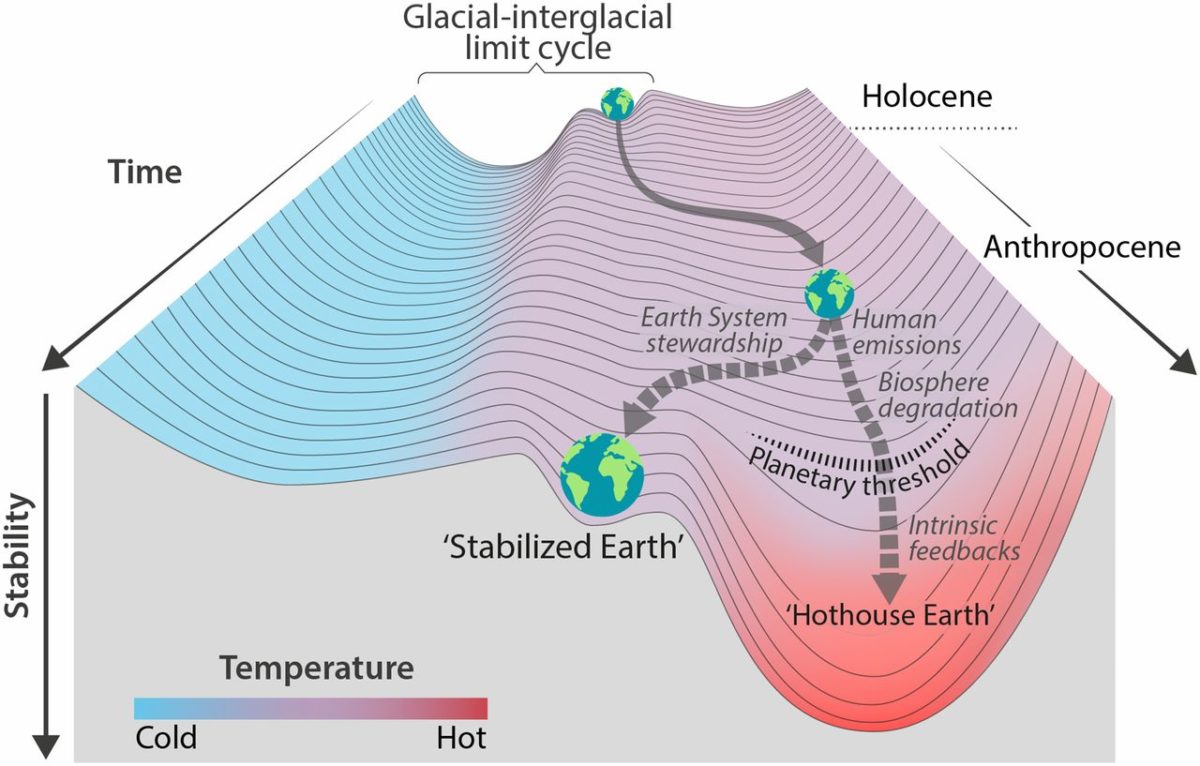Dying coral reefs and collapsing reef ecosystems: evidence of more progress towards the point of no return on the way to Hothouse extinction
Part 5 of David Spratt’s guidebook to events along the road to Hothouse Hell: Increasingly frequent and stronger marine heatwaves are bleaching and killing corals, architects of reef ecosystems. Rotting organic matter emits GHGs
Coral polyps are the primary architects of the remarkably diverse coral reef ecosystems that border lands and islands in tropical oceans around the world. As such coral reefs provide shelter and sustenance for a significant fraction of our ocean’s biomass for at least part of their lives. Coral polyps are colonial animals related to jellyfish and sea anemones. However, thanks to symbiotic algae that live in their bodies, they are sinks for capturing and sequestering CO₂ in forming the limestone reefs. Over the last 10,000 years or so, they have thrived in waters close to the maximum temperatures their photosynthetic algae can tolerate. However, as the world begins to warm beyond temperatures observed for many 10s of thousands of years corals have had to expel their algae and become bleached. As Spratt describes, bleaching is becoming common event for the Great Barrier Reef, and is leading to dying coral reefs and collapsing reef ecosystems around the world.
As masses of polyps die and rot they become net greenhouse gas emitters (CO₂, methane, hydrogen sulfide – H₂S – where the H₂S is also highly toxic) and end up covered by slimes of bacteria and algae. The dead reef becomes quite toxic, and loses many of the species that originally thrived there through starvation, poisoning, or loss of habitat. Thus, the rising greenhouse gas emissions from dying and decomposing reef ecosystems adds yet another source of positive feedback to drive global temperatures (including ocean temperatures) higher yet.
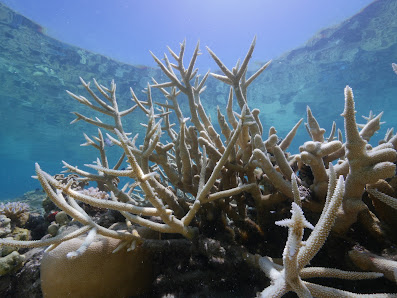
28 January 2022
by David Spratt in Climate Code Red
Fifth in a series.
Read 1 | 2 | 3 | 4 | 5 | 6 | 7
Ecosystems, including coral reefs, mangroves and kelp forests in Australia, are degrading fast as the world’s sixth mass extinction gathers pace.
…
Corals survive within a narrow water temperature band, and suffer heat stress and expel zooxanthellae if the ocean temperature gets too high. Bleaching events vary in intensity; in the extreme case, all zooxanthellae are expelled and the living colony will appear totally white (hence “bleaching”). As elevated sea temperatures persist, coral mortality rates increase: corals may recover, if there are any zooxanthellae left in their tissues, but if not, death appears to be inevitable.
The bottom line: If severe bleaching events occur regularly at shorter than 10–15 year intervals, then reefs face a death spiral of coral mortality followed by inadequate recovery periods. And that is what is happening now. Along Australia’s Great Barrier Reef, the frequency of mass bleaching is increasing, with events occurring in 1998, 2002, 2016, 2017 and 2020. The 2016-17 events severely bleached half the reef, whose extent has been reduced by three-quarters over the last 40 years. Coral reproduction on the Great Barrier Reef has fallen 89% after repeated recent bleachings. [My emphasis]
Read the complete article….
Analyses published yesterday shows that it is probably already too late to save dying coral reefs and reef ecosystems (including the Great Barrier Reef) from terminal collapse in the next decade or two
One of these articles is referenced in today’s The Age newspapers.
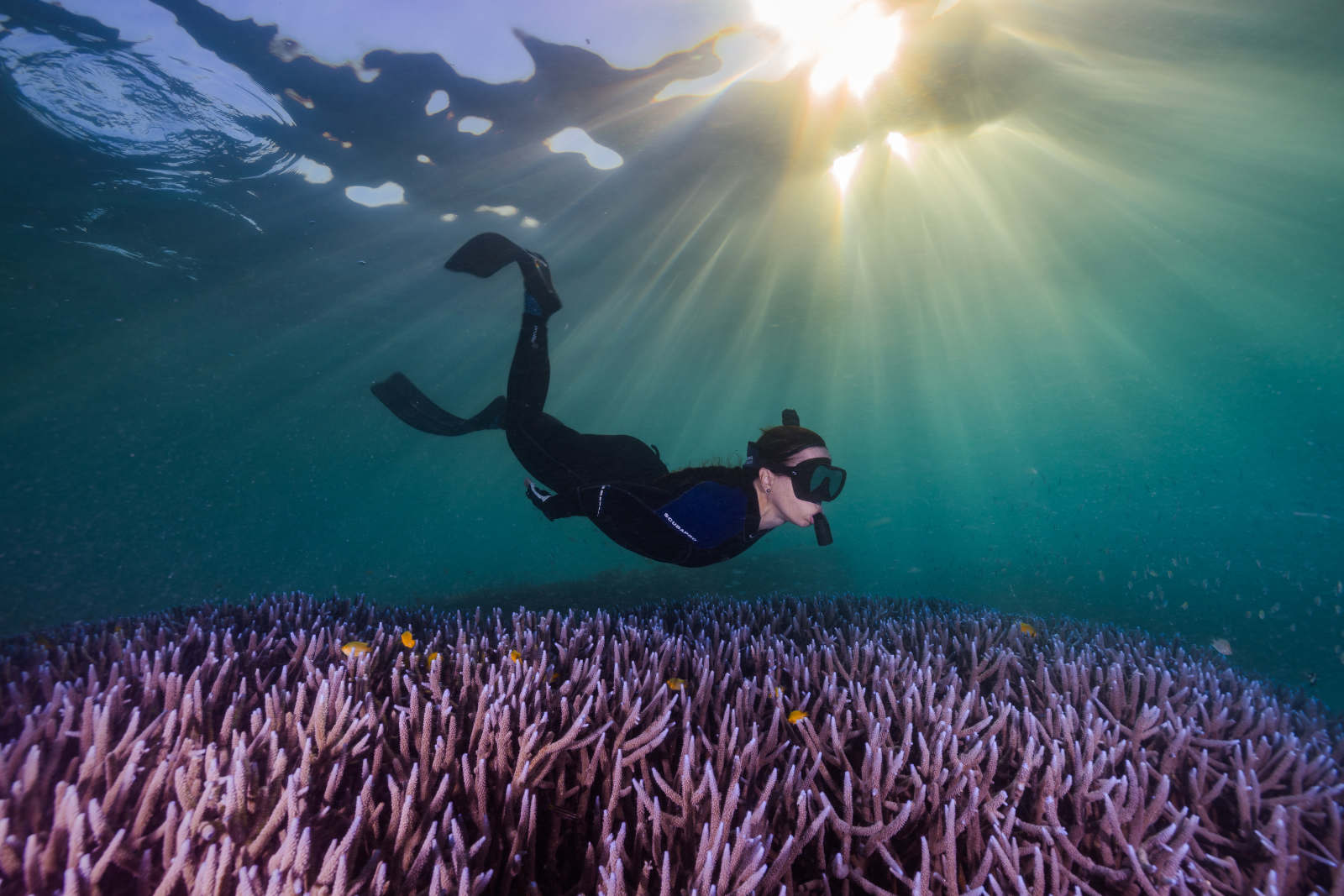
No climate change refuge for coral reefs: study
by Miki Perkins, 02/02/2022 in The Age
Global warming of 1.5 degrees above pre-industrial levels will be catastrophic for almost all coral reefs, including those that scientists once hoped would act as refuges during climate change.
Only 0.2 per cent of coral reefs globally are likely to avoid frequent heat stress if temperatures warm, according to new research from an international team of universities, including James Cook University in Townsville.
…
Even thermal refuges, which experts assumed would be more able to endure warming oceans owing to factors such as the consistent upwelling of cool deep waters, would provide almost no protection to reef animals, the study found. It is published today in PLOS Climate.
…
Read the complete article….
Actually, there were two articles on rapidly rising sea surface temperatures (SST) published yesterday in the science journal, PLOS Climate. Together they seem to seal the fate of most of our planet’s coral reef ecosystems:
Future loss of local-scale thermal refugia in coral reef ecosystems
by Adele M Dixon, et al., 01/02/2022 in
PLOS Climate – https://doi.org/10.1371/journal.pclm.0000004
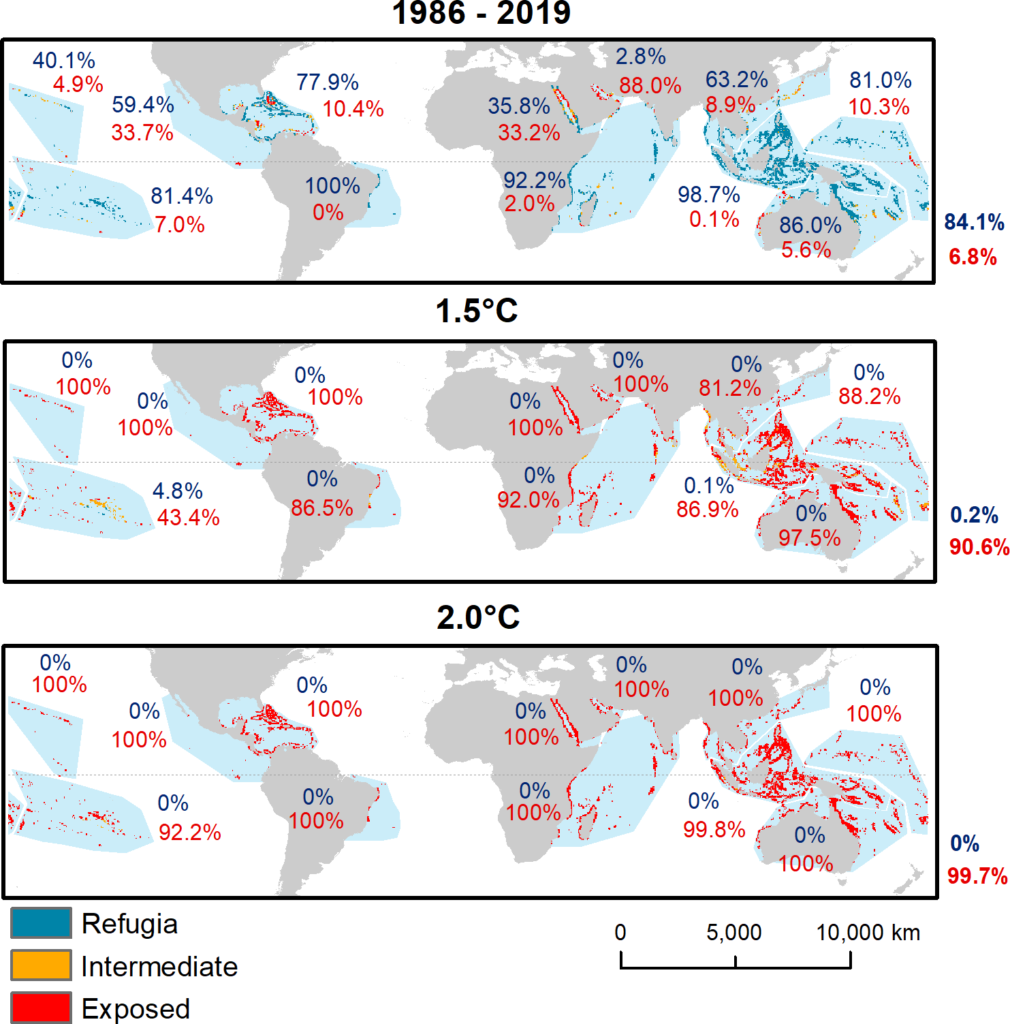
ABSTRACT: Thermal refugia underpin climate-smart management of coral reefs, but whether current thermal refugia will remain so under future warming is uncertain…. We confirm that warming of 1.5°C relative to pre-industrial levels will be catastrophic for coral reefs….
Read the complete article…..
The recent normalization of historical marine heat extremes
by K. Tanaka & Kyle S. Van Houtan 01/02/2202 in
PLOS Climate – https://doi.org/10.1371/journal.pclm.0000007
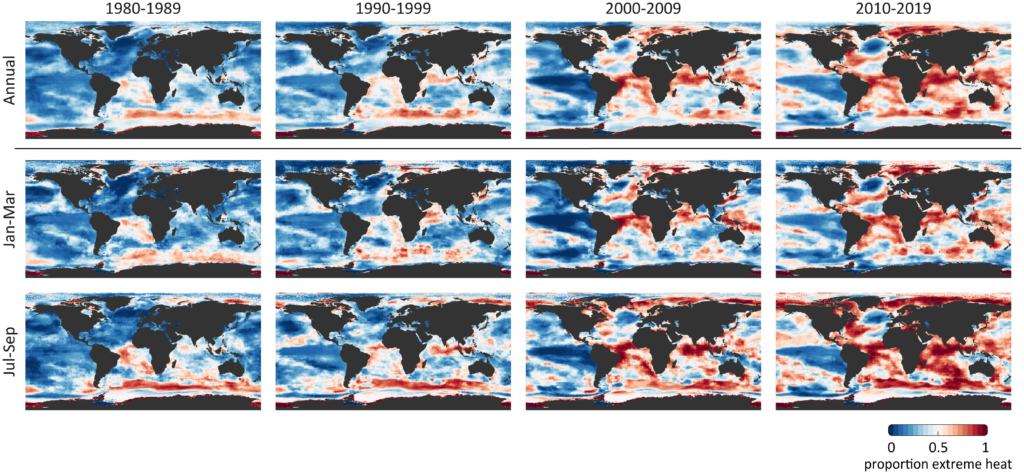
ABSTRACT: Climate change exposes marine ecosystems to extreme conditions with increasing frequency…. For the year 2019, our index reports that 57% of the global ocean surface recorded extreme heat, which was comparatively rare (approximately 2%) during the period of the second industrial revolution. Significant increases in the extent of extreme marine events over the past century resulted in many local climates to have shifted out of their historical SST bounds across many economically and ecologically important marine regions. For the global ocean, 2014 was the first year to exceed the 50% threshold of extreme heat thereby becoming “normal”….
Read the complete article….
The bottom line: It is almost certainly too late to save the Great Barrier Reef we know from ecological collapse, but we might be able to save keystone species able to rebuild it if we can stop and reverse global warming
Given that we have probably already crossed several tipping points such as permafrost thawing on the road to runaway global warming where natural positive feedbacks will continue working to drive global temperatures ever higher, the Great Barrier Reef as we know it seems to be unavoidably doomed. However, as long as a majority of the keystone architect coral species survive somewhere, they may be able to recolonize their previous ranges and begin building new reefs over subsequent centuries.
Unfortunately, when we should be working all-out to stop anthropogenic greenhouse gas emissions, our present Australian Government lead by Capt. Humbug (AKA Scotty from Marketing) and his deputy Blarny Barney (the Man with the Hat) is working hard to grow and maintain the healthy capacity of the fossil fuel industry to produce and burn carbon for energy. Also, not only are they doing nothing practical to stop and reverse global warming, but they just promised to spend a billion dollars on the Reef (over 9 years) to cloak the fact that they are doing nothing that counts to save the Reef (or for that matter our own human species).
The rapidly approaching Federal Election gives us the opportunity to remove Capt. Humbug and his wooden headed puppets from office and replace them with trustworthy, thinking people who have committed themselves to put work to solve the climate crisis as their first order of business if elected to Parliament. Vote Climate One’s Traffic Light Voting System is designed to help you do this.
